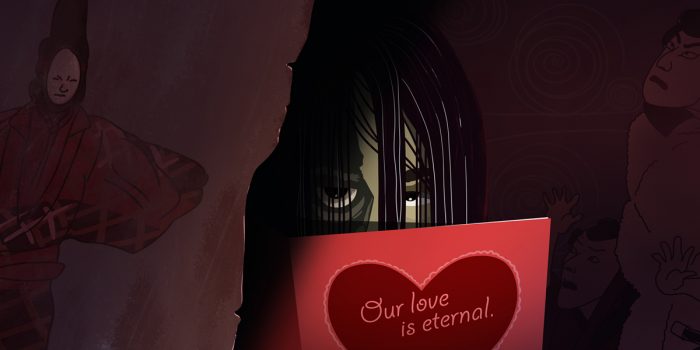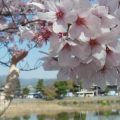‘Til Death Do Us Part?
They say true love is eternal. What about heartbreak? As February draws to a close, we bring you the other side of Valentine’s Day: Some of Japanese theater’s most popular tales of scorned lovers seeking vengeance from beyond the grave — with a burning passion.
In Japanese folklore and traditional theater, supernatural stories of unrequited affection, crimes of passion, and ghoulish consequences have been passed down for centuries… and show no signs of being put to rest anytime soon.
This time on Sidedoor, we bring you three of Japanese theater’s most popular tales of scorned lovers seeking vengeance from beyond the grave. We’ll explore what these stories can tell us about love, power, and the timeless appeal of a good ghost story.
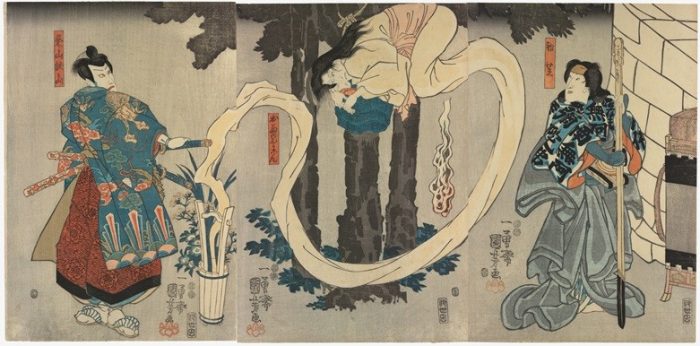
Bandō Shūka as Hatsushiba (R), Ichikawa Kodanji VI as the Ghost of Okiku (C), and Ichikawa Danjūrō VIII as Asayama Tetsuzan (L) by Utagawa Kuniyoshi. Ink and color print on paper, published by Iseya Chusuke. 1850, Edo period Japan. Smithsonian’s National Museum of Asian Art.
Guests
Frank Feltens, Curator of Japanese Art at the Smithsonian’s National Museum of Asian Art
Kit Brooks, Japan Foundation Assistant Curator of Japanese Art at the Smithsonian’s National Museum of Asian Art
Listen now
Links & Extras
- See vibrant art depicting the stories shared in this episode in person (if you dare…) in the new exhibition Staging the Supernatural: Ghosts and the Theater in Japanese Prints, opening at the Smithsonian’s National Museum of Asian Art on March 23.
- You can also read more about the exhibition in the accompanying book by Kit Brooks and Frank Feltens.
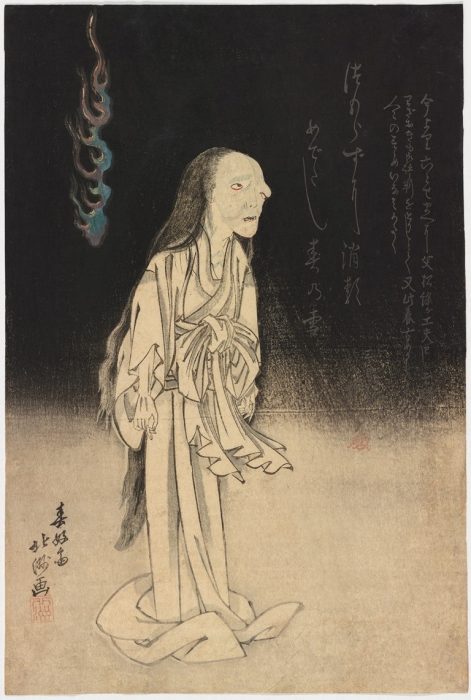
Onoe Kikugorō III as Oiwa by Shunkosai Hokushu. Ink and color print on paper, block carved by Kasuke Horiko. 1826, Edo period Japan. Smithsonian’s National Museum of Asian Art.
- Explore the museum’s extensive digital collection of Edo period prints portraying ghosts, demons, and other supernatural figures.
- Get more spine-tingling Japanese ghost stories with a list of traditional tales from the travel and culture site Savvy Tokyo.
- The story of the temple Dōjōji retold in this episode is a well-known play from Noh theater, one of the world’s oldest stage traditions. Learn more about the history and striking visual elements of this ancient artform in a clip from National Geographic.
- The spirits, monsters, and other Yokai of Japanese folklore continue to influence culture today. See the connections between these supernatural stories and modern horror tropes in a presentation from the Japan Foundation.
- Ready to leave spooky stories of scorned lovers behind? Take an audio tour through another centuries-old tale depicted in Japanese art with our Sidedoor season 8 episode, Sumo Wrestlers vs. Firefighters.
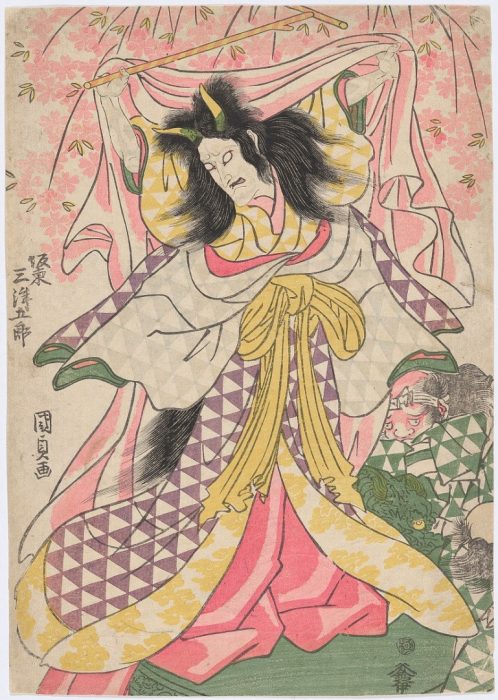
Actor Bandō Mitsugorō III as the Maiden of Dōjō-ji by Utagawa Kunisada. Ink and color print on paper, published by Suzuki Ihei. 1816, Edo period Japan. Smithsonian’s National Museum of Asian Art.
Transcript
Sidedoor (S10E12) – Til Death Do Us Part
Posted: 20 February 2024
-
Categories:
Art and Design , Asian Art Museum , Collaboration , Education, Access & Outreach , Feature Stories
